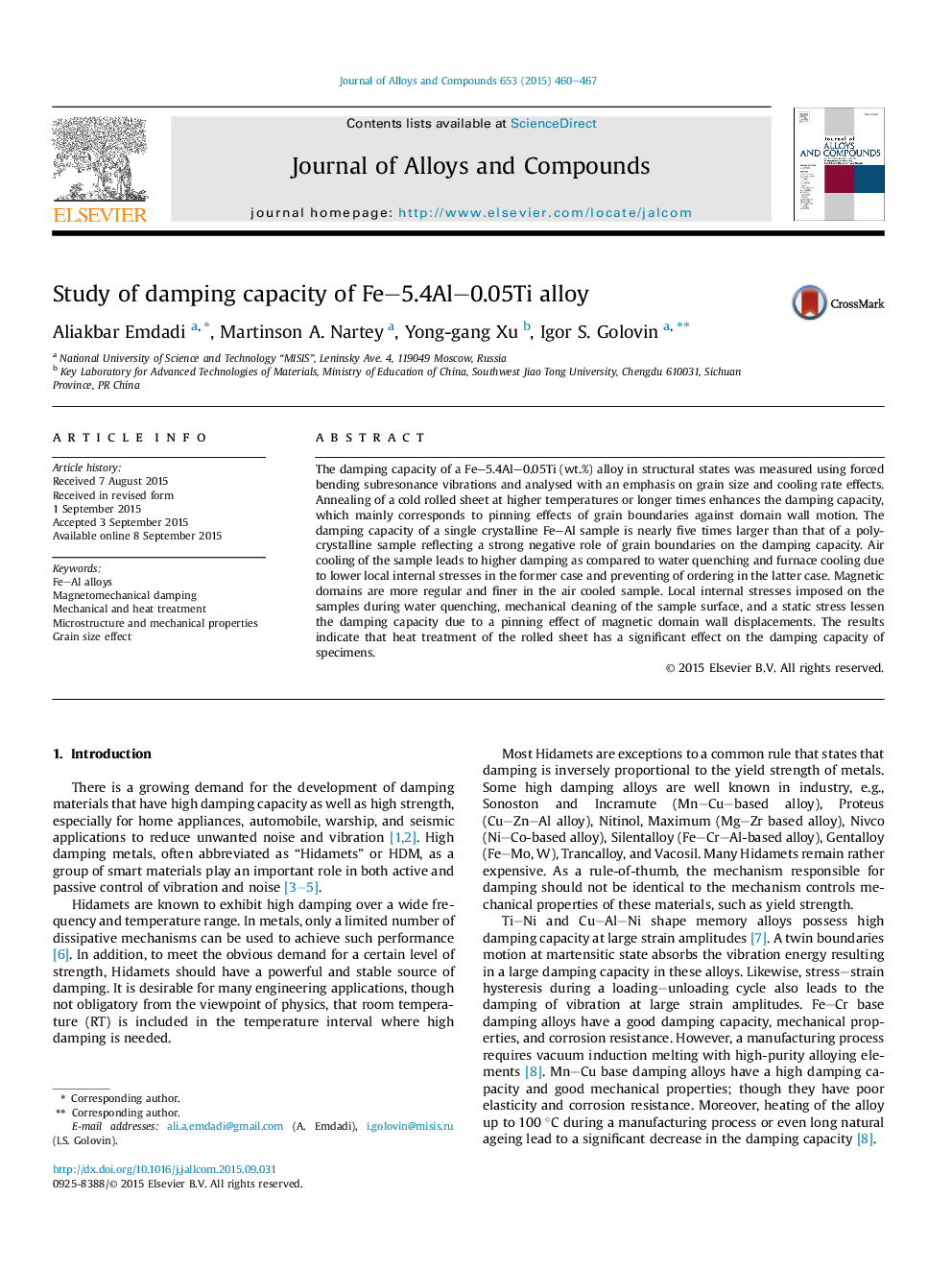| Article ID | Journal | Published Year | Pages | File Type |
|---|---|---|---|---|
| 1607581 | Journal of Alloys and Compounds | 2015 | 8 Pages |
Abstract
The damping capacity of a Fe-5.4Al-0.05Ti (wt.%) alloy in structural states was measured using forced bending subresonance vibrations and analysed with an emphasis on grain size and cooling rate effects. Annealing of a cold rolled sheet at higher temperatures or longer times enhances the damping capacity, which mainly corresponds to pinning effects of grain boundaries against domain wall motion. The damping capacity of a single crystalline Fe-Al sample is nearly five times larger than that of a polycrystalline sample reflecting a strong negative role of grain boundaries on the damping capacity. Air cooling of the sample leads to higher damping as compared to water quenching and furnace cooling due to lower local internal stresses in the former case and preventing of ordering in the latter case. Magnetic domains are more regular and finer in the air cooled sample. Local internal stresses imposed on the samples during water quenching, mechanical cleaning of the sample surface, and a static stress lessen the damping capacity due to a pinning effect of magnetic domain wall displacements. The results indicate that heat treatment of the rolled sheet has a significant effect on the damping capacity of specimens.
Keywords
Related Topics
Physical Sciences and Engineering
Materials Science
Metals and Alloys
Authors
Aliakbar Emdadi, Martinson A. Nartey, Yong-gang Xu, Igor S. Golovin,
